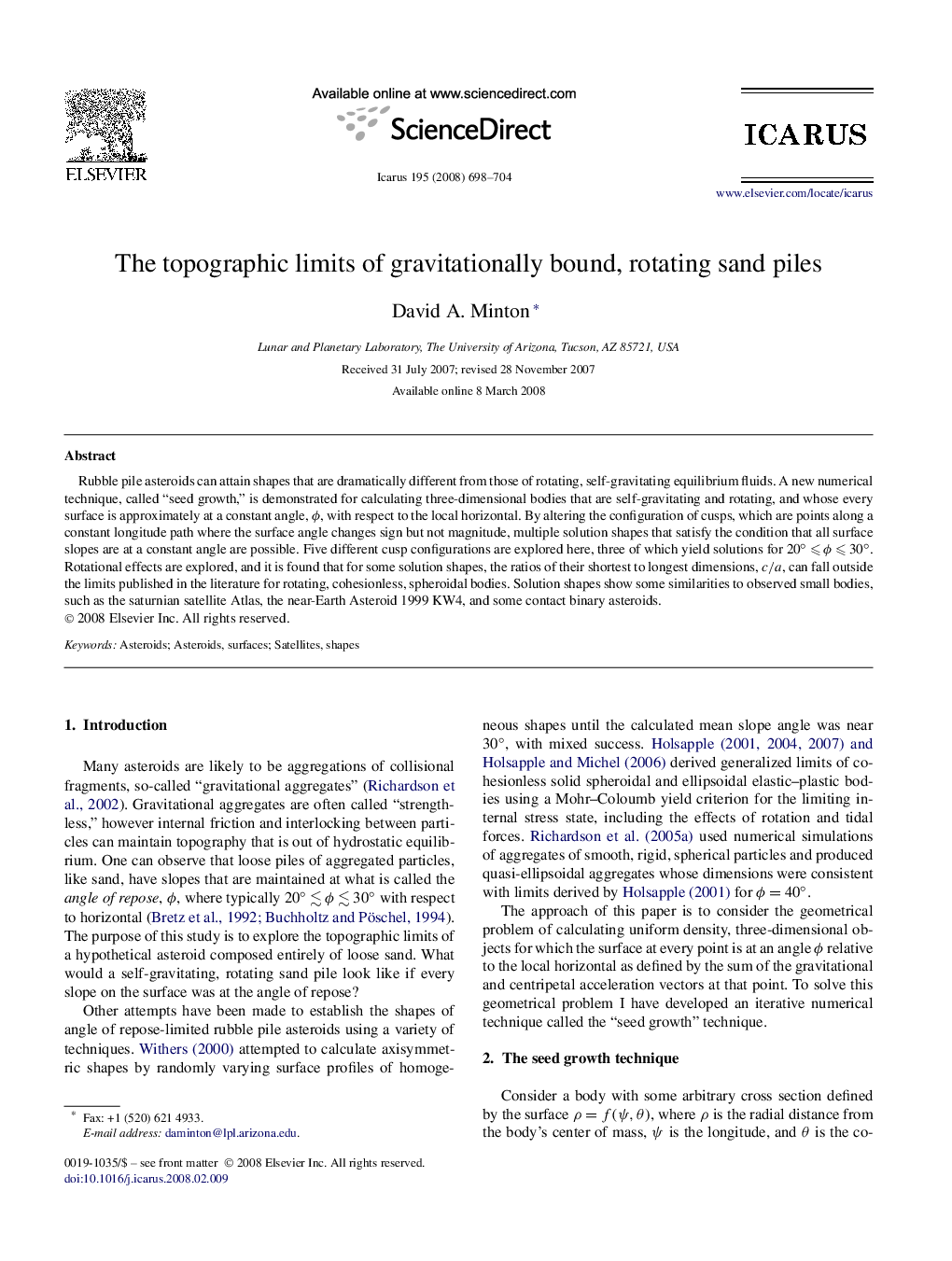| Article ID | Journal | Published Year | Pages | File Type |
|---|---|---|---|---|
| 1774965 | Icarus | 2008 | 7 Pages |
Rubble pile asteroids can attain shapes that are dramatically different from those of rotating, self-gravitating equilibrium fluids. A new numerical technique, called “seed growth,” is demonstrated for calculating three-dimensional bodies that are self-gravitating and rotating, and whose every surface is approximately at a constant angle, ϕ , with respect to the local horizontal. By altering the configuration of cusps, which are points along a constant longitude path where the surface angle changes sign but not magnitude, multiple solution shapes that satisfy the condition that all surface slopes are at a constant angle are possible. Five different cusp configurations are explored here, three of which yield solutions for 20°⩽ϕ⩽30°20°⩽ϕ⩽30°. Rotational effects are explored, and it is found that for some solution shapes, the ratios of their shortest to longest dimensions, c/ac/a, can fall outside the limits published in the literature for rotating, cohesionless, spheroidal bodies. Solution shapes show some similarities to observed small bodies, such as the saturnian satellite Atlas, the near-Earth Asteroid 1999 KW4, and some contact binary asteroids.
